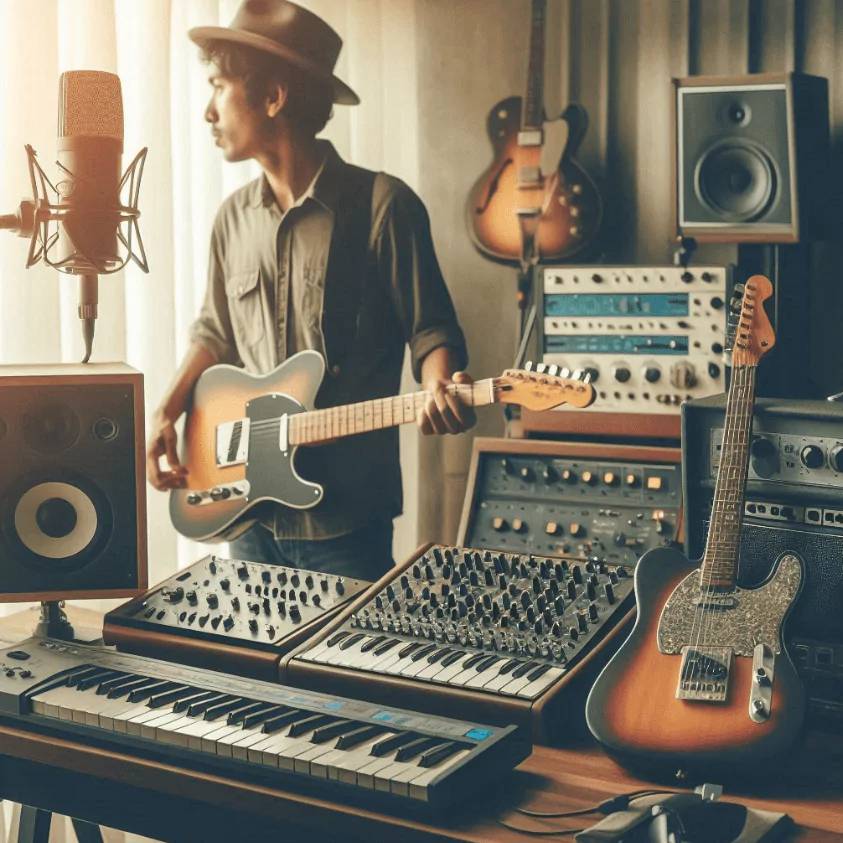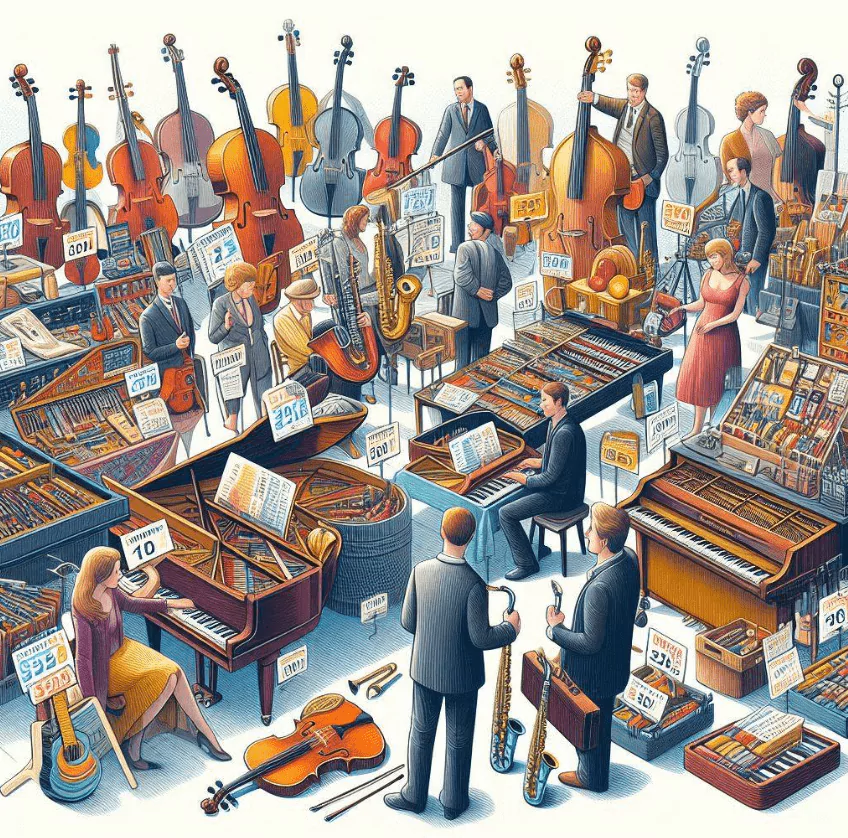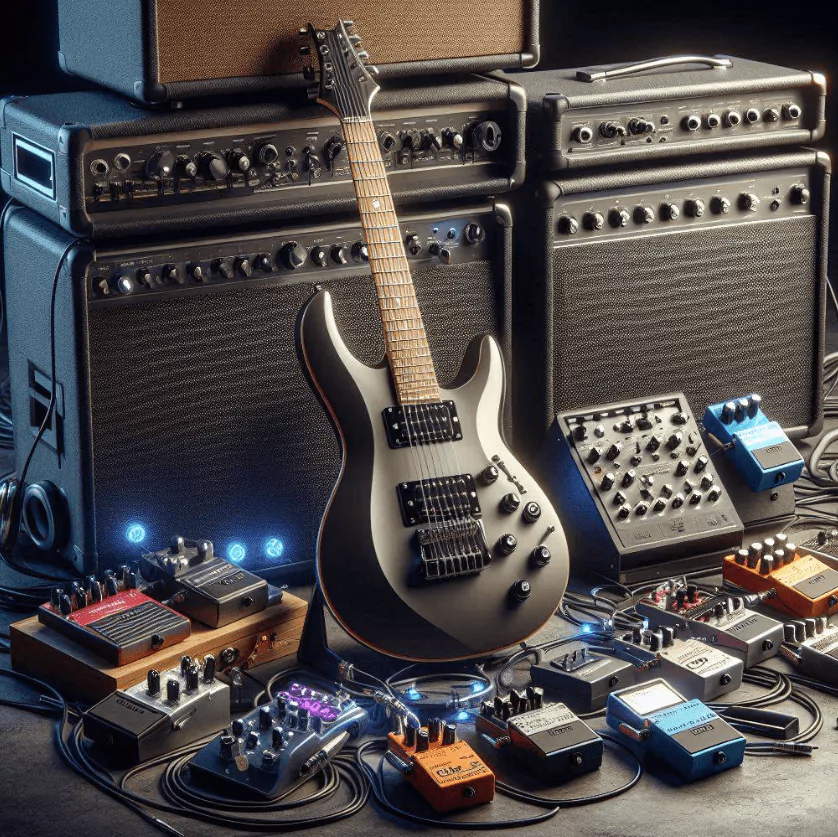The classification of keyboard instruments (for newbies)

Keyboard instruments can be divided into chordophones, either hammered, or plucked. The first group consists of grand pianos, and pianos, whereas harpsichord would fall into the second group. Another classification is based on groups of aerophones – like for example organ.

Another idiophones – struck (celesta), and blown (accordion, harmonium, melodica), as well as electrophones – electro-mechanical (Hammond organ, mellotron), or electronic (synthesizer, electronic piano, electric piano).
- Grand piano – a musical instrument from the zither family. Its strings are stretched over a steel frame and are sounded by hammers. Each time any of the keys are pressed down by the player, it gets the string being struck by a given hammer, what causes the string to vibrate, then after rebounding it stops higher or lower (depending on the strength of the strike). The instrument is made of the cast iron frame, front part lid, capo bar, dampers, back part lid, damper mechanism, sostenuto rail, pedals (right and left), rods, and pedal mechanism, bridge, soundboard, string, and hitch pin. Its name was used for the first time in 1598, in a letter to The Prince of Modena, where words “piano e forte” are mentioned. The inventor of the modern grand piano called clavicembalo col piano e forte was Bartolomeo Cristofori – the creator of twenty copies of this instrument.
- Piano – a keyboard instrument, which was a successor of clavicytherium, and the so-called giraffe. Its inventor was Bartolomeo Cristofori, who in 1709 created the instrument with a hammered mechanism. The next versions were Jan Schmidt’s and Gruneberger’s inventions from the end of the eighteenth century, as well as the invention of Th. Lond from 1802. After twenty four years its design was varied by Robert Wornum, whose idea has lasted to this day. The only difference in this construction has been about moving the damper system to the bottom. The piano is related to the grand piano. The one element that differs is its vertical stringing. For a long time it was actually the grand piano that played the main role in music, however, this also changed around nineteenth century. Thanks to its lower price and smaller dimensions, it got more popular, and it has kept that popularity till today.
- Harpsichord – a plucked instrument that gained popularity in Europe around the 15th century, which is also designed with a keyboard. Its strings are moved with a jack and plectrum mechanism, which when set in motion plucks the strings stretched above the soundboard. For a long time harpsichord had been having an important role among other instruments, known for taking the first role in producing parts of basso continuo. Its place was later taken by the piano in the 18th century. Only after two hundred years a Polish harpsichordist Wanda Landowska brought its usage back again to the spotlight. Among harpsichords we can single out its different models, such as gravicembalo (a large instrument with long strings), unison (with double strings), virginal, spinet, or clavicytherium (with vertical stringing).
- Organ – a keyboard instrument, mostly used in churched and halls. On many accounts the pipe organ is the biggest instrument out of all the ones that have been discovered before it. Not only the number of acoustic-wave-sources, but also its dynamics and concise acoustic capabilities, make it incomparable to other instruments. They are moreover characterized by a tracker action, bellows, and also by creating sounds by driving air through pipes.
- Celesta – a musical instrument derived from a group of keyboard idiophones. It’s rooted as far as in the end of the 19th century. The sound in celesta is produced by hammers striking the set of metal plates suspended over wooden resonators.
- Accordion – an instrument from the group of blown aerophones and idiophones. Its history reaches 1822, when Friedrich Buschmann created a prototype of that currently popular instrument. It’s modern version was designed seven years later by Cyrill Demian in Vienna. The sound is produced by the air flow across its reeds, which is stimulated by manually compressing or expanding its bellows. The reeds then vibrate to produce the sound inside of the instrument’s body. It’s equipped with keys and control buttons, that respond to bass sounds and chords. This design constitutes the basic idea of dividing the accordion into two parts – the bass one, and the melodic one.
- Harmonium – an instrument from the group of free-reed organ. Its history reaches 1810, when Gabriel Joseph Grenié tried to build an instrument of the harmonium-shape in France. Next attempt was by Alexandre Debian, who improved that design in 1842. A breakthrough for harmonium was in 1856 when Estey designed the American model of it. However, it wasn’t ever really too successful. It usually served as a substitute for organ in churches. After some more modern instruments got invented, harmonium disappeared from the list of potentially used instruments.
- Melodica – a small blown instrument, equipped with not many, but more than twenty keys. Not only its design, but also the way of playing it, as well as its sound is all what makes melodica somehow resemble a harmonica. The sound is produced by blowing air into its mouthpiece, while at the same time pressing a given key.
- Hammond organ – an electric keyboard instrument, as the first of its kind that went into the mass production, being at the same time highly praised by artists around the world. The first model was created by Laurens Hammond in 1935, and short after Hammond Organ Company appeared distributing it. The sound of that organ was pleasant and interesting, what attracted the listeners, and motivated artists to employ it in their music. At first the instrument was equipped with a separate console and a performing part, which eventually got turned into one part.
- Mellotron – one of the most popular instruments from the group of electro-mechanical electrophones. Mellotrons were famous before the invention of synthesizers. The first model was created in 1963 by Streetly Electronics. Its system is based on the method of reproducing sounds, what means that the sounds are being recorded on tape and reproduced by pulling the magnetic tape across a head while pressing a given key. Mellotron occurred to be one of the most used instruments by rock musicians. It wasn’t long though until it got substituted by the aforementioned synthesizers, which got actually close to imitating the sound of it.
- Synthesizer – the representative of the electronic electrophones. The sound is synthesized through instrument amplifiers, and by modeling the aspects of its tone. The history of the synthesizer reaches 1949 – that’s when Harry Olson and Herbert Belar, inspired by “A Mathematical Theory of Music”, designed a machine for producing popular music. Despite having some problems at the beginning with wrong calculations and generating its music in a wrong way, it later turned out to be successful, and prompted a new beginning for new models of the instrument.
- Electronic piano – a keyboard instrument, which allows its player to play along the automatically programmed accompaniment. Its primary element is a keyboard, which is either weighted, non-weighted, or with a synthesizer action set up. There are also other elements like an interface software, a computerized musical arranger, and a sound generator. It’s very often confused with synthesizers or digital pianos, but despite many similarities those are quite different instruments.
- Electric piano – it has a similar sound to a piano. The source of its sound in this case is an analogue-electric system with generators and modulators. The evolution of technology changed this instrument into a digital piano, very often mixed up with electronic pianos. However, it differs a lot with the accuracy of sound, which in electric pianos is more reminiscent of the classic piano. Moreover, it has at least one pedal.
by Music Store Muzyczny.pl







